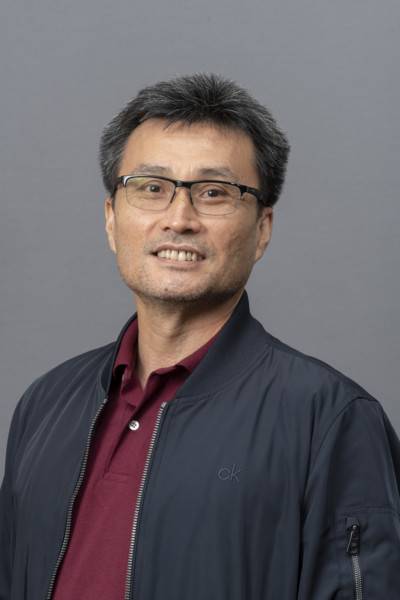Matt Joyce | April 24, 2023

The Kyle Fire Department is calling on the expertise and innovation of Texas State University engineering professors in the construction of a state-of-the-art fire station in eastern Hays County.
Hays County Emergency Services District No. 5 plans to break ground in May on the new firehouse in a fast-growing unincorporated area northeast of Kyle that historically has been underserved, said Susan Meckel, a district board director.
The primary goal of the $6.9 million firehouse — made possible partly by Hays County American Rescue Plan Act funds — is to provide faster emergency response. But the district also aims to build a station that minimizes environmental impacts, including for Plum Creek, a tributary of the San Marcos River. In addition, the project provides new opportunities to monitor firefighters’ health and their exposure to chemicals in fire-retardant materials.
“The fire service industry has a lot of long-held traditions, and there’s been a cookie-cutter approach to how you build stations,” Meckel said. “This is taking a holistic view and using new technology to mitigate any negative impacts and actually make improvements for our firefighters, our stations, and our community.”
TXST’s involvement is facilitated by the Connected Infrastructure for Education, Demonstration and Applied Research Consortium (CIEDAR), a new TXST business model intended to help accelerate industry projects for faculty members.

Hays County ESD No. 5 joined CIEDAR, which then worked with the project’s principal investigator, Dr. San Hwang, an associate professor of civil and environmental engineering in the Ingram School of Engineering. Under a two-year contract, the district is funding $152,454 to CIEDAR while CIEDAR also acquired another $25,000 from TXST’s Division of Research to further support the work of Hwang and his colleagues.
TXST’s involvement grew out of Hwang’s service on the steering committee of the Plum Creek Watershed Partnership, a group of local stakeholders dedicated to protecting and improving the health of Plum Creek. The new fire station will be built next to Porter Creek, which is a tributary of Plum Creek. Meckel is also on watershed steering committee.
After Hwang made a presentation on green infrastructure to the watershed group, he and Meckel started discussing how TXST could contribute to the new fire station’s design to address challenges related to flooding and other extreme weather, as well as study concerns about firefighter health.
Hwang then assembled a team consisting of Dr. Jung Yeon, Dr. Xijun Shi, Dr. Stacey Kulesza, Dr. Togay Ozbakkaloglu, and Andres Carvallo. The agreement calls on the TXST team to provide design, monitoring, and professional services. It also gives students the opportunity to make field trips to the construction site as part of their classwork. The courses that will participate include smart infrastructure, materials infrastructure, structural analysis, environmental engineering, systems analysis, and design.
“San Hwang worked very hard to find and create this opportunity,” said Carvallo, co-director of CIEDAR. “He drafted the best project proposal; and he came to CIEDAR for our extended expertise in helping define multi-disciplinary solutions to offer — such as power electronics, energy, internet of things, safety, smart buildings — to help assemble the pieces and to help provide extra funding.”
A primary component of the work by Hwang’s team will be green and technology-enhanced infrastructure. Hwang said this will include paving part of the parking lot with permeable concrete that allows water to drain through to minimize ponding and stormwater runoff. Sensors will be embedded in the permeable concrete to provide data on drainage and help monitor clogging, which can be a limitation of permeable concrete.
The TXST team will also embed sensors in other parts of the station’s structural concrete to provide real-time monitoring to check for maintenance or rehab needs — which can be an issue when the pavement is subjected to 55,000-pound firetrucks.
The TXST team will also study the potential for harvesting energy from the station’s pavement by embedding thermocouples in the driveway concrete slab. By monitoring the temperature in the pavement over time, the team hopes to figure out whether it could extract sustainable energy for the station.
“We are not going to actually extract energy, but if the data says we are able to, then we may have the chance to expand that concept to have a much bigger research and development project,” Hwang said.
When it comes to firefighter health, Hwang said the TXST team requested design modifications to collect wash water from the firefighters’ protective clothing and from the truck wash bays, as well as samples from the property’s soil. TXST faculty and graduate students will collect water samples and test these samples for chemicals including PFAS (per-and polyfluoroalkyl substances), a common chemical used in fire-retardant spray.
“We want to understand what firefighters are bringing back to the station with them,” Meckel said. “They put their lives on the line every day, and we’re seeing incidences of high cancer rates at young ages among firefighters. We know that PFAS are everywhere, but we want to understand exactly what our firefighters are exposed to and whether there are ways we can mitigate that and improve both firefighter health and environmental health for whatever might be coming out of our stations.”
Both Hwang and Meckel said they hope the partnership will provide insights and value to justify extending the contract beyond its initial two years.
“It’s important that when we’re looking at building infrastructure, we’re looking at the smarter and wiser ways to do things,” Meckel said. “Hopefully this station will be a prototype for new and better ways to do this.”
Share this article
For more information, contact University Communications:Jayme Blaschke, 512-245-2555 Sandy Pantlik, 512-245-2922 |
